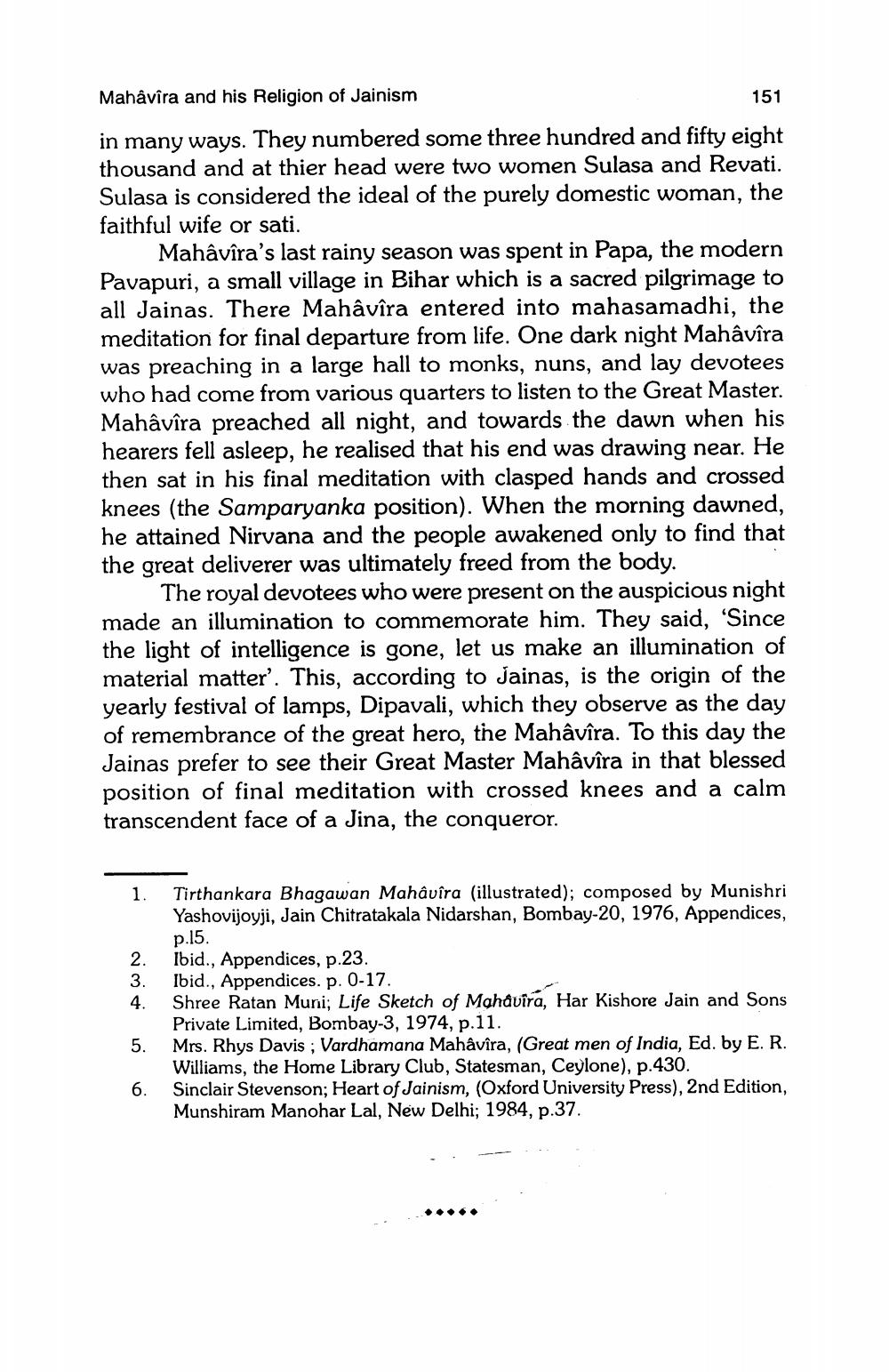________________
Mahavira and his Religion of Jainism
151
in many ways. They numbered some three hundred and fifty eight thousand and at thier head were two women Sulasa and Revati. Sulasa is considered the ideal of the purely domestic woman, the faithful wife or sati.
Mahâvîra's last rainy season was spent in Papa, the modern Pavapuri, a small village in Bihar which is a sacred pilgrimage to all Jainas. There Mahâvîra entered into mahasamadhi, the meditation for final departure from life. One dark night Mahâvîra was preaching in a large hall to monks, nuns, and lay devotees who had come from various quarters to listen to the Great Master. Mahâvîra preached all night, and towards the dawn when his hearers fell asleep, he realised that his end was drawing near. He then sat in his final meditation with clasped hands and crossed knees (the Samparyanka position). When the morning dawned, he attained Nirvana and the people awakened only to find that the great deliverer was ultimately freed from the body.
The royal devotees who were present on the auspicious night made an illumination to commemorate him. They said, 'Since the light of intelligence is gone, let us make an illumination of material matter'. This, according to Jainas, is the origin of the yearly festival of lamps, Dipavali, which they observe as the day of remembrance of the great hero, the Mahâvîra. To this day the Jainas prefer to see their Great Master Mahâvîra in that blessed position of final meditation with crossed knees and a calm transcendent face of a Jina, the conqueror.
1. Tirthankara Bhagawan Mahâvîra (illustrated); composed by Munishri
Yashovijoyji, Jain Chitratakala Nidarshan, Bombay-20, 1976, Appendices, p.15. Ibid., Appendices, p.23.
Ibid., Appendices. p. 0-17. 4. Shree Ratan Muni; Life Sketch of Mahavira, Har Kishore Jain and Sons
Private Limited, Bombay-3, 1974, p.11. 5. Mrs. Rhys Davis ; Vardhamana Mahâvîra, (Great men of India, Ed. by E. R.
Williams, the Home Library Club, Statesman, Ceylone), p.430. Sinclair Stevenson; Heart of Jainism, (Oxford University Press), 2nd Edition, Munshiram Manohar Lal, New Delhi; 1984, p.37.




